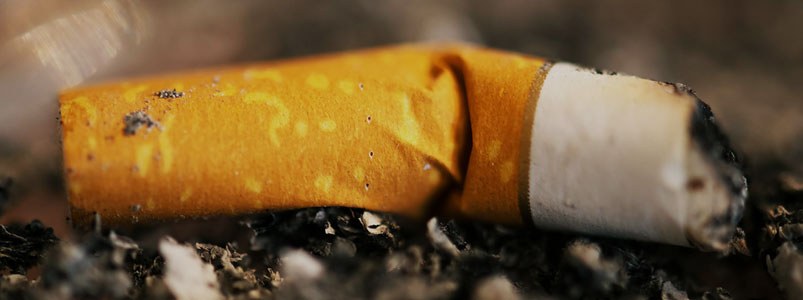Drug Facts
With so many voices and opinions out there, it’s important to understand the facts.
Fact is that while you’re a teen (and even into your early 20’s!), you’re still growing and developing, and drug abuse during these years in particular can have a lasting impact. Another fact to consider: the brain is much more vulnerable to addiction during these years. 90% of Americans with a substance abuse problem started smoking, drinking or using other drugs before age 18.
When it comes to drug use, individual reactions and experiences vary, so it’s important to understand the usual risks and effects, both short- and long-term. Knowledge can be the key to making your own best decisions.
Information provided isn’t to prevent anyone from seeking medical treatment under the advice and care of their doctor. A variety of substances offer potential medicinal value, but that doesn’t negate their risks, especially when abused.
- Adderall
- Alcohol
- Bath Salts
- Benzos
- Cocaine
- DXM
- GHB
- Hallucinogens
- Heroin
- Inhalants
- Ketamine
- LSD
- Marijuana
- MDMA
- Meth
- Mushrooms
- Over-the-Counter
- Prescription Drugs
- Rohypnol
- Salvia
- Spice
- Steroids
- Tobacco & Nicotine
- Xanax
- Adderall
- Alcohol
- Bath Salts
- Benzos
- Cocaine
- DXM
- GHB
- Hallucinogens
- Heroin
- Inhalants
- Ketamine
- LSD
- Marijuana
- MDMA
- Meth
- Mushrooms
- Over-the-Counter
- Prescription Drugs
- Rohypnol
- Salvia
- Spice
- Steroids
- Tobacco & Nicotine
- Xanax

Tobacco & Nicotine
Tobacco is a carrier for the highly addictive drug nicotine. Once your body gets a taste for nicotine, it can quickly become a life-long addiction, with extremely fatal consequences.
AKA
(Cigarettes) smokes, cigs or butts. (Smokeless tobacco) chew, dip, spit tobacco, snus or snuff
What is it?
Nicotine is the main drug in all forms of tobacco. Nicotine is one of the most heavily used and most addictive drugs in the U.S.
The Risks
Whether smoked or chewed, nicotine is one of the most highly addictive drugs used in today’s society. And once you’re hooked, it’s extremely hard to overcome this addiction.1 Surveys have shown that most adult smokers first tried cigarettes during their teen years, and there is a direct relationship between early smoking and adult addiction.
Smoking harms your immune system and can affect nearly every organ of your body.2,3 The nicotine gets you hooked, but it’s the other chemicals in tobacco like carbon monoxide, tar, formaldehyde, cyanide and ammonia that cause the major damage–many of these are known carcinogens (cancer-causing poisons).4 Carbon monoxide keeps red blood cells from getting the full load of oxygen needed for healthy cellular growth. This encourages the carcinogens in tobacco to bind to the cells throughout your body and cause cellular damage.5,6
Chewing or sniffing tobacco is just as dangerous as smoking and also has a high risk of addiction. And prolonged use of smokeless tobacco leads to a high risk of cancers of the mouth.
Bidis and hookahs have become popular alternatives to smoking cigarettes, and some people seem to think they are less harmful than regular cigarettes. The truth is that hookah smoke still delivers addictive nicotine, and bidis actually have more nicotine than cigarettes.
Long-Term Effects
You probably already know that the greatest long-term risk of smoking is cancer and lung disease. Here are some numbers to consider: In the 40 years between 1964 and 2004, cigarette smoking caused an estimated 12 million deaths, including 4.1 million deaths from cancer, 5.5 million deaths from cardiovascular disease, 1.1 million deaths from respiratory disease and 94,000 infant deaths related to mothers smoking during pregnancy.
Even after 30 years of warnings on packages, tobacco continues to impact our health. In 2010, more than 220,000 new cases of lung cancer were reported, and more than 150,000 Americans died as a direct result of the disease.7
The Bottom Line
Smoking tobacco and smokeless tobacco are both carriers of the highly addictive drug nicotine. Once your body gets a taste for nicotine, it can easily become a life-long addiction, with highly fatal consequences. Although quitting can be difficult at any age, the good news is that by giving up tobacco for life, you can drastically improve your health and reduce your risk of cancer, heart disease and other life-threatening diseases associated with tobacco use.
- Campaign for Tobacco Free Kids. The Path to Smoking Addiction Starts at Very Young Ages.
Published December 2009. Retrieved August 2011.
View Source [↩] - Campaign for Tobacco Free Kids. The Path to Smoking Addiction Starts at Very Young Ages.
Published December 2009. Retrieved August 2011.
View Source [↩] - Center for Disease Control and Prevention Health Effects of Cigarette Smoking.
Published March 2011. Retrieved October 2011.
View Source [↩] - National Institute on Drug Abuse. DrugFacts: Cigarettes and other Tobacco Products.
Revised December 2012. Retrieved May 2013.
View Source [↩] - Campaign for Tobacco Free Kids. The Path to Smoking Addiction Starts at Very Young Ages.
Published December 2009. Retrieved August 2011.
View Source [↩] - Center for Disease Control and Prevention Health Effects of Cigarette Smoking.
Published March 2011. Retrieved October 2011.
View Source [↩] - American Lung Association. The Promise of Research Turning the Tide in Lung Cancer.
Published 2011. Retrieved August 2011.
View Source [↩]







